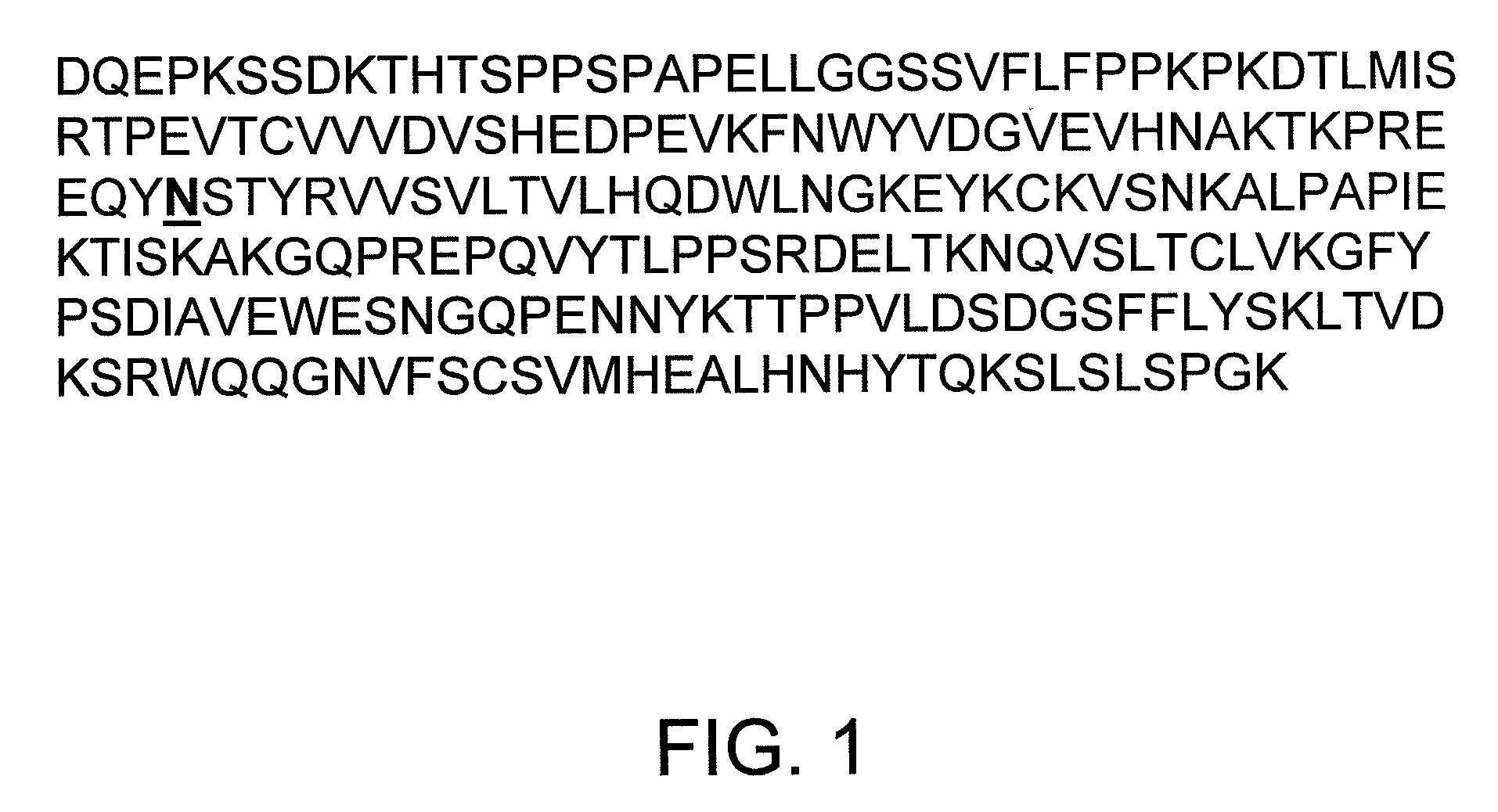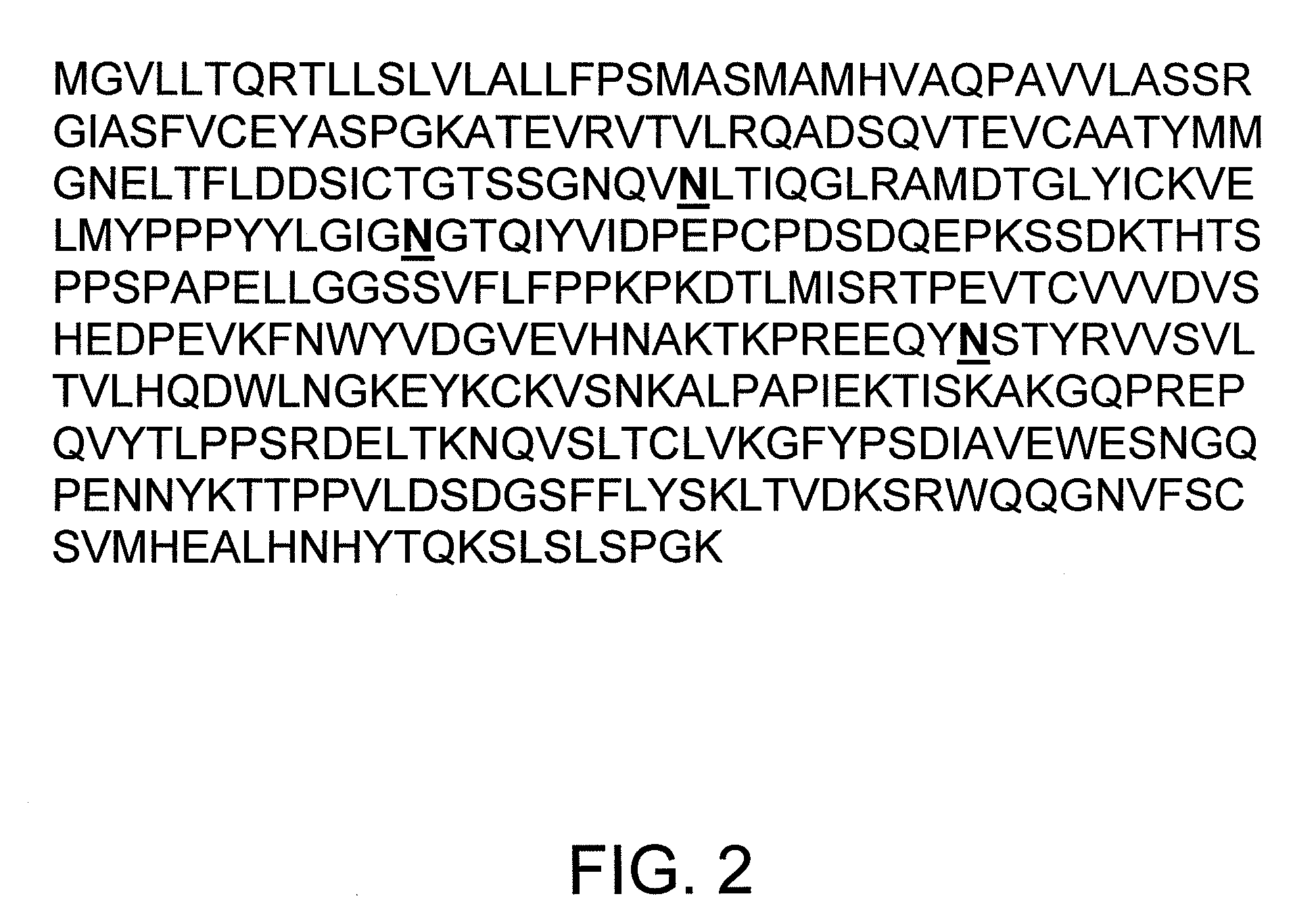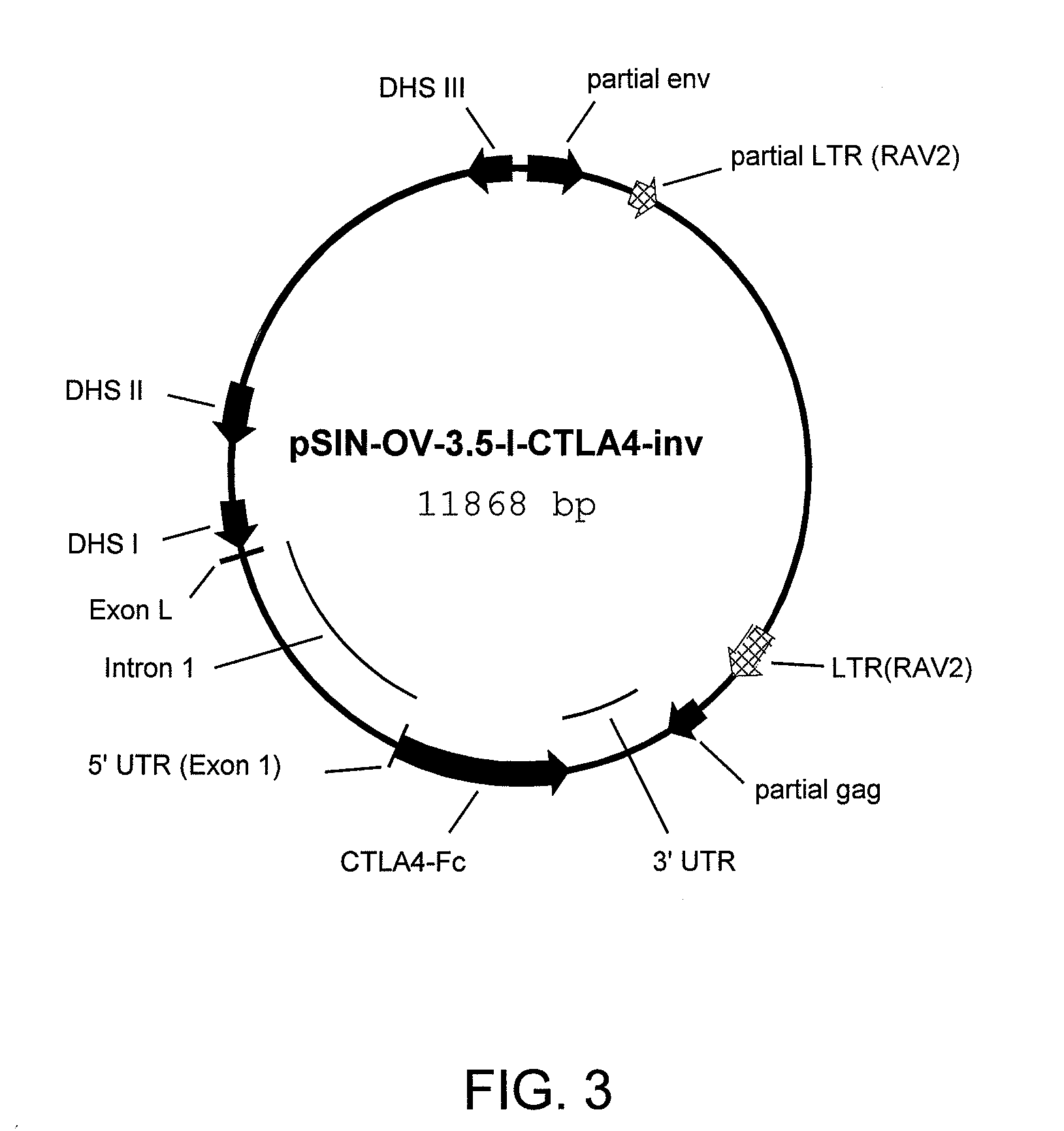Composition comprising isolated human CTLA4-Fc fusion protein produced in a transgenic chicken
a technology of fusion protein and chicken, which is applied in the field of expression of exogenous genetic material in avian cells, can solve the problems of long generation time between founder and production herd, limited applicability, and large husbandry and veterinary costs
- Summary
- Abstract
- Description
- Claims
- Application Information
AI Technical Summary
Benefits of technology
Problems solved by technology
Method used
Image
Examples
example 1
Production of Vector pSIN-OV-3.5-I-CTLA4-Fc-Inv
[0128]This vector includes the ovalbumin Dnase hypersensitive sites (DHS) I, II and III, the first exon (exon L), the first intron and the CTLA4-Fc fusion protein coding sequence inserted in frame with the ATG of second exon (exon 1) and with the 3′ untranslated region (UTR). The expression cassette is inserted in the inverse orientation into an avian leukosis virus (ALV) vector, which was made self-inactivating (SIN) by deletion of nucleotides 1 to 173 of the ALV LTR sequence.
[0129]The vector was constructed as follows: pNLB-3.9-OM-CTLA4-Fc, disclosed in Example 20 of US patent publication No. 2007 / 0113299, published May 17, 2007, the disclosure of which is incorporated in its entirety herein by reference, was cut with Nae I and Not I. The Not I site was filled in by Klenow reaction. The resulting 8125 bp fragment was gel purified, religated, producing pOM-3.9-CTLA4-dSacI.
[0130]pOM-3.9-CTLA4-dSacI was cut with EcoRI and Kpn I and the 8...
example 2
Production of Transgenic Quail Using SIN-OV-3.5-I-CTLA4-inv
[0136]Retroviral particles containing the pSIN-OV-3.5-I-CTLA4-inv vector (FIG. 3) and pseudotyped with the VSV envelope protein were produced as described in US patent publication No. 2007 / 0077650, published Apr. 5, 2007, the disclosure of which is incorporated in its entirety herein by reference. Virus particles were harvested at 48 hours post-transfection, concentrated and on the same day, approximately 4 microliters of the virus suspension containing about 1×105 particles was injected into the subgerminal cavity of stage X quail eggs. Eggs were sealed and hatched.
[0137]Egg whites from chimeric quail were assayed using an ELISA for CTLA4-Fc. The highest expressing quail was found to have CTLA4-Fc in her egg white at approximately 16 μg / ml. The transgenesis level in these quail is estimated at about 5% or less. Thus the level in a G1 should be substantially greater.
example 3
Construction of pSIN-3.9-OM-CTLA4-Fc
[0138]The 4907 bp Mfe I / Xho I fragment of pALV-SIN (disclosed, for example, in US patent publication No. 2007 / 0124829, published May 31, 2007) was ligated to the 5115 XhoI / EcoRI fragment of pOM-3.9-CTLA4 (shown in FIG. 15 of US patent publication No. 2007 / 0113299, published May 17, 2007), producing pSIN-3.9-OM-CTLA4-Fc Shown in FIG. 4 and SEQ ID NO: 4,
PUM
| Property | Measurement | Unit |
|---|---|---|
| body weight | aaaaa | aaaaa |
| pH | aaaaa | aaaaa |
| flow rate | aaaaa | aaaaa |
Abstract
Description
Claims
Application Information
 Login to View More
Login to View More - R&D
- Intellectual Property
- Life Sciences
- Materials
- Tech Scout
- Unparalleled Data Quality
- Higher Quality Content
- 60% Fewer Hallucinations
Browse by: Latest US Patents, China's latest patents, Technical Efficacy Thesaurus, Application Domain, Technology Topic, Popular Technical Reports.
© 2025 PatSnap. All rights reserved.Legal|Privacy policy|Modern Slavery Act Transparency Statement|Sitemap|About US| Contact US: help@patsnap.com



